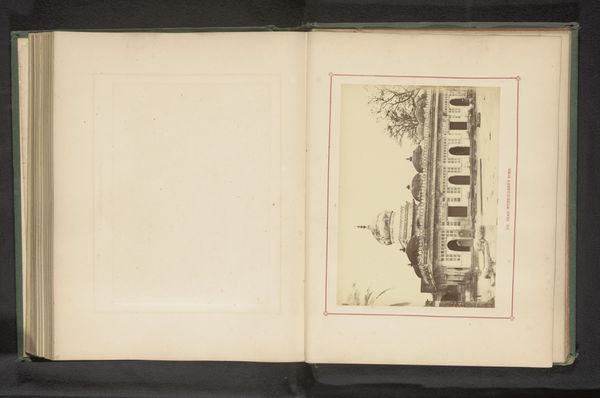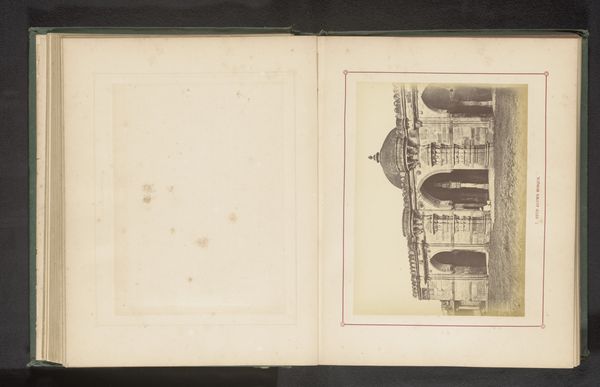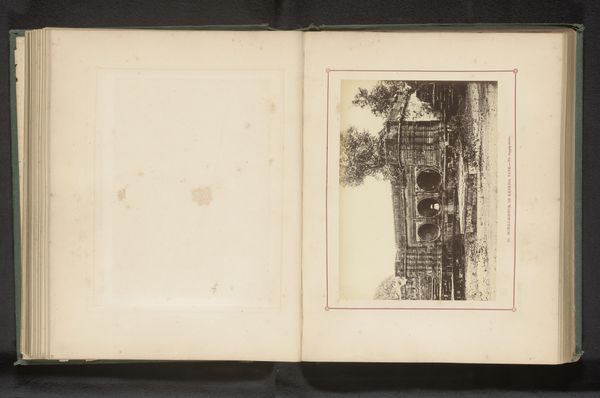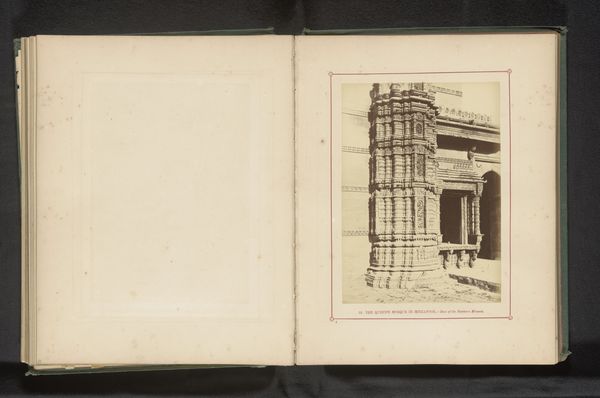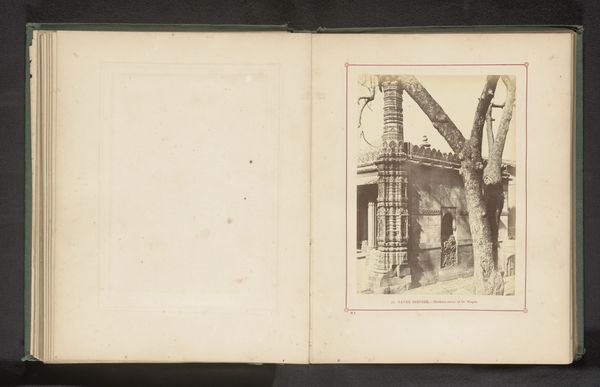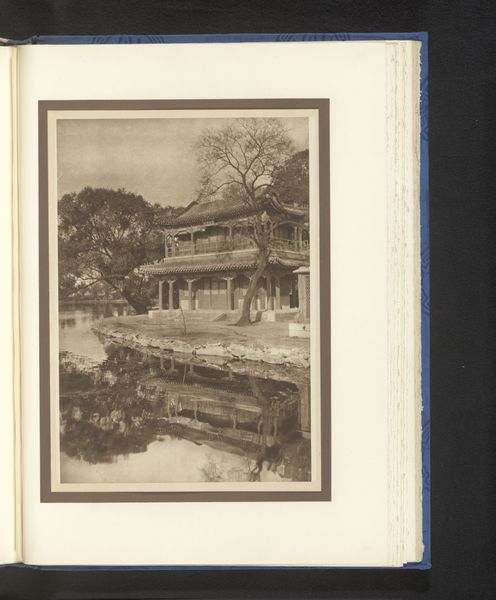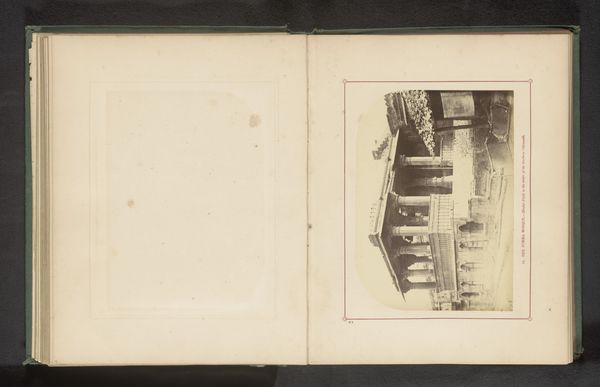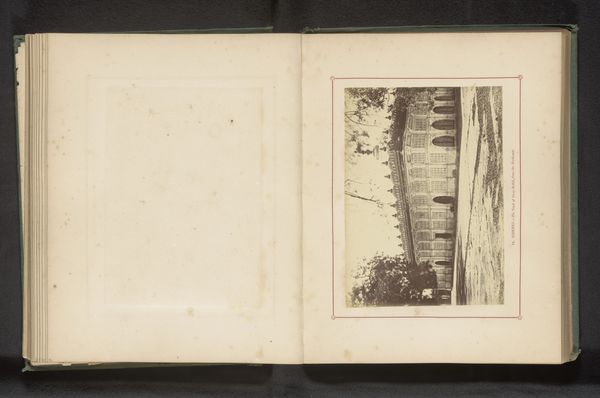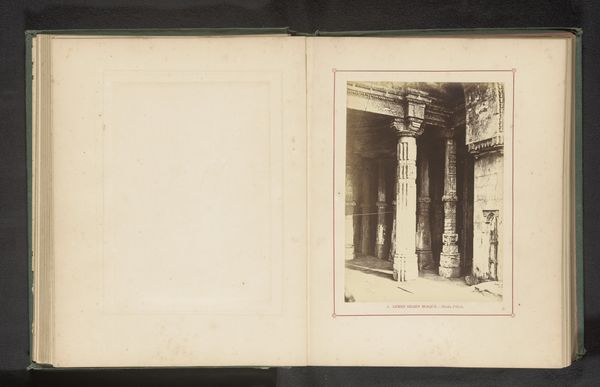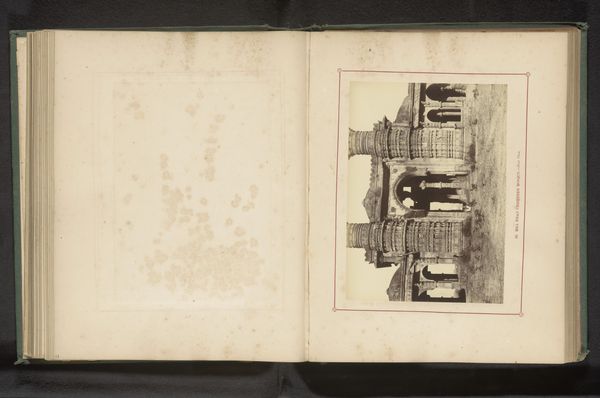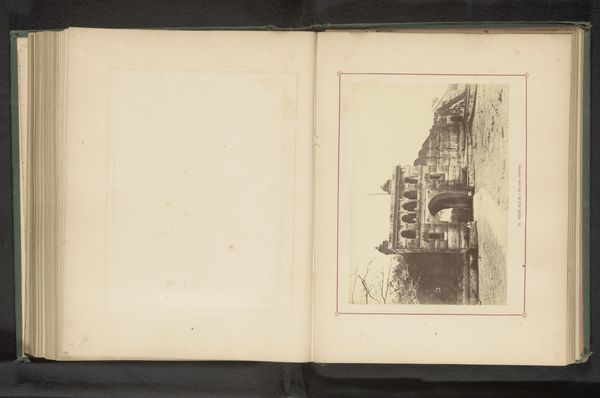
photography, albumen-print, architecture
#
asian-art
#
landscape
#
photography
#
ancient-mediterranean
#
albumen-print
#
architecture
Dimensions: height 197 mm, width 144 mm
Copyright: Rijks Museum: Open Domain
Curator: Before us is a photographic print by Thomas Biggs, entitled "Gezicht op de Hutheesingtempel in Ahmedabad," dating to before 1866. It's an albumen print, a very common photographic process at the time. Editor: There’s a distinct mood here – a stillness and sense of monumentality. The light, as captured in this albumen print, emphasizes the texture and patterns of the architecture itself. A tight framing draws us right in. Curator: The Hutheesing Temple is a Jain temple. The temple as a symbol in art often signifies a threshold—a liminal space between the earthly and the divine. Biggs captured a place imbued with profound spiritual meaning. Consider that during the early days of photography, simply capturing these spaces would influence their ongoing place in our cultural memory. Editor: Notice how Biggs has structured the composition, aligning the architectural planes, using shadow, creating a rhythm and depth, particularly in those arched portals and balcony spaces. We get an almost mathematical order here; however, this is somewhat disrupted by the organic lines and growth of the single, small, mature tree near the entrance. It stands in visual balance. Curator: Right, the tree acts as an intriguing contrast. In Indian art, trees are frequently symbols of life and renewal, representing cycles of rebirth and connection to nature. Perhaps Biggs subtly wanted to incorporate it to comment on the cyclical nature of time and the enduring relevance of spiritual spaces amidst changing societal landscapes. Editor: I appreciate the interplay of natural and geometric forms, the way Biggs allows those elements to communicate. But I find myself wishing he had pulled back some distance to allow more light and detail to reflect off and within the planes of the temple structure. Curator: What Thomas Biggs has provided here, through the photographic medium, allows us an invaluable perspective on an important religious and cultural landmark. His work serves as a vital historical document and continues to inspire dialogue. Editor: Ultimately, Biggs provides a structured and serene perspective, prompting deeper contemplation of geometric architecture within natural surroundings, a frozen point in a historical narrative.
Comments
No comments
Be the first to comment and join the conversation on the ultimate creative platform.
